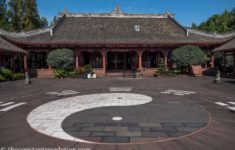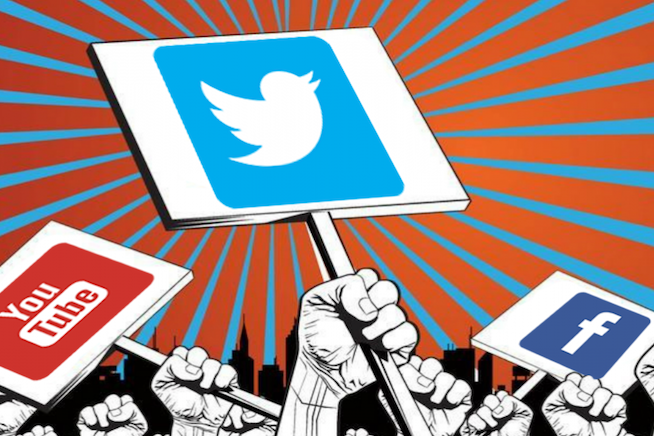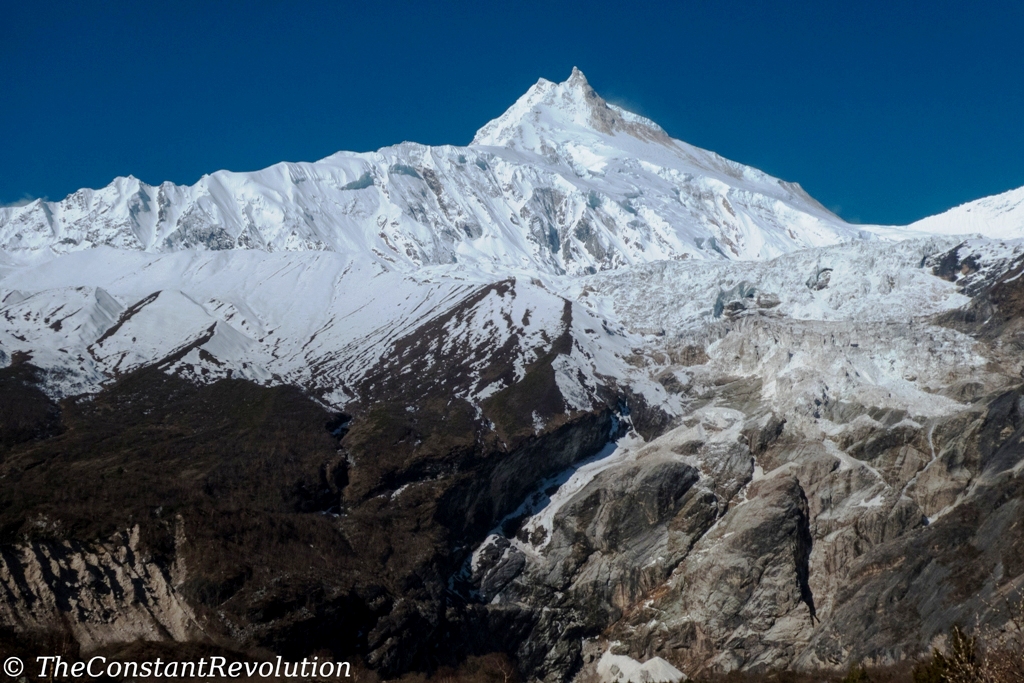Visiting the genocide museums in Phnom Penh is absolutely necessary to fully understand what happened in Cambodia during the Khmer Rouge regime. Here is how it went, what I have seen and felt, and the reflections about today’s world that this powerful and moving experience has caused to emerge in me.
This isn’t an easy subject to tackle. One doesn’t know where to start. Those images are still swirling in my head like a roaring mass-less wind, and yet they are so vivid. The eyes of those photographs – man, women and children – are relentlessly staring at me. The torture chambers, the mass graves, and the blood, the bodies twisted in pain, and the skulls, so many skulls. How is that possible?

I went to visit the Tuol Sleng Museum of Genocide in Phnom Penh. The museum, better known as centre S-21, is a former high school building transformed into a secret facility for torture and interrogation by the Khmer Rouge, the paramilitary group that took total control of Cambodia between 1975 and 1979. Four years of hideous, incomprehensible madness. After the visit to S-21 I went to the Choeng Ek Killing Fields, about 15 Km outside the Cambodian capital, a place for executions now transformed in a museum and a memorial.
I don’t think there are words strong enough, accurate enough, or sentences capable of making sense of it. Where to start? And yet, I feel compelled, I have to write about it because I believe we all need to develop an individual responsibility when facing the horrors of history.
Every account of these events is important, no matter how small, no matter how brief and personal. It is too easy to forget, to relegate it all to a past that cannot come back. It is too easy to be ignorant, and with ignorance comes indifference, and with indifference comes control.
I knew of the Khmer Rouge regime, I knew of the absurd, ultra-nationalistic, communist ideology built by Pol Pot, brother number one and undisputed leader of the movement. An ideology centred around the idea of a self-sustained, collectivistic rural society, and therefore the need to systematically erase urban life, along with all forms of education and all institutions. I knew as well about the violence, the tortures and the killing fields. But this isn’t a history lesson, other people took care of that, and the information is widely available.

I just came to realise that to know and to see are two very different things. It isn’t the same to read some kind of historical or political analysis in a book, and walk around the prison where the facts happened while listening to the testimony of the handful of people that came out of there alive. It isn’t the same to generally hear about “horrible conditions”, and see the cells where they were beaten up, and the shackles used to tie them one to the other like pigs in a slaughterhouse, and the tools used to torture them.
Only then it hits you: this has really happened. It’s like wakening up from a deep slumber, the dream becomes reality, and you didn’t expect it. There were people here, human beings, breathing and thinking like me, and screaming a scream that no one could hear. Because they did scream. The injustice of it, those people did nothing, absolutely nothing wrong. They didn’t know nor understand why they were imprisoned, and yet they had to endure atrocious pain before death could finally free them.
Three million people died, one-fourth of the entire Cambodian population, during the four years of the Khmer Rouge madness.
Many died of hunger and fatigue after they were forced out of the cities and to work 12 or more hours in the rice fields every day with barely enough food to survive. The whole social engineering of the Khmer Rouge organization was a failure from the start. Food wasn’t enough, and it wasn’t allowed to cook any more, not even pick a fruit from a tree. That was a crime punishable with death. People were forced to communal living, and all meals were prepared by the Khmer Rouge apparatus.
Many others, half it has been estimated, were considered enemies, and imprisoned in places like S-21. Only a few knew about these places. The Angkar, meaning The Organization, the ruling body of the Khmer Rouge party, was behind it. Only the people in Angkar knew, and those who were assigned to the management of the prisons.
Cambodian and foreigners alike, ethnic minorities, and all those who were suspected of being political dissidents, including within the Khmer Rouge ranks, were enemies. The “New People” as opposed to the “Base People” (the farmers Pol Pot was so much obsessed with), were enemies. Therefore most of the people living in cities, intellectuals, artists, professionals, those with an education of any kind, were enemies. It was enough to wear glasses, to speak a foreign language, to be able to read or to have soft hands to be considered an enemy.
If you were an enemy, your family was an enemy, parents, partners, and kids, everyone had to be eliminated. There was no room for vengeance in the Khmer Rouge Regime. If you were an enemy, you were interrogated and tortured with medieval tools and methods, until you confessed things you hadn’t done, and you made names of other innocent people, your friends and family, anything to make it stop, anything to die. Dying was the only way out of it.
Pol Pot infamously used to say that it was better to kill one innocent rather than let live one enemy.

It’s tough to look at the torture chambers and the prisoners’ cells at S-21, to see in what conditions they were living, what was done to them. But the hardest for me was the photos of the prisoners, hundreds of them, one beside the other. Hundreds of nameless faces, the same photos families had to look through after the nightmare, after these prisons were discovered, to understand if their loved ones were among them.
These are the identification photos, portraying prisoners at their arrival, when they still didn’t know what was going on, when there was some kind of courage and determination in their eyes, a sparkle of hope, the light of life. To look at them, and then to look at the photos of tortured prisoners, their broken body transformed in a soulless shell, the emptiness of their eyes. That was heartbreaking beyond imagination. It cannot be explained, it cannot be comprehended.
Between 12,000 and 20,000 have been estimated to be imprisoned in S-21, to our knowledge only 12 survived. More than 200 similar facilities have been found around the country.
But death was a mistake in places like S-21, prisoners were not supposed to die there, they were supposed to remain alive, and confess. Only after a confession was approved they were taken to the killing field. They were told they were going to a new home, they were travelling overnight, inside closed trucks. Once there, they were made to kneel in front of a hole dug in the ground. It was dark, they couldn’t see anything, and the speakers were playing loud music to cover any possible noise. They would kneel and the executioner would hit them on the back or top of their head with some kind of farmers tool. Bullets were too expensive. They would fall in a grave with other bodies, some still flapping the last slow breaths of life away.
About 130 mass graves have been found in Choeng Ek, the bones and pieces of clothes keep emerging still today from the earth. All around the country more than 300 killing fields were found.

The skulls of many of those men, women and children have been collected and put in a shrine within a Buddhist Stupa on site, as a memorial. That is the featured photo of this post.
So many skulls, and the holes and the cracks were they were hit. Some people could just be silent when visiting this place, silence is a form of respect. But I have seen many tears uncontrollably rolling down cheeks. Silence and tears for those nameless skulls, people I never knew, but whose faith has been so cruel, nonsensical, and unjust.
This is what I have seen in those two museums, but words don’t even begin to explain. In order to understand one can only see, and listen. Then you hear their screams and the scream of your soul in unison that says never again, never this should happen again.
History is there to be read, with its scarred old body, but are we capable of understanding the messages? In a time of renewed and rising nationalism everywhere in the world, including in Western democracies, are we paying attention to what happens? Do we know where we do not want to go?

What the Khmer Rouge did, albeit particularly ferocious and absurd, is not the only case of genocide or ethnic cleansing we know of. There have been many such cases only in the 20th century: Nazi-Germany, Rwanda, Bosnia-Herzegovina… and there are some going on today, in the indifference of the international community, and probably without the knowledge of most people living in those countries.
Internment camps (renamed for the occasion political re-education camps) and a systematic abuse of human rights is happening in China against Uighurs and other Muslim minorities. In Myanmar the Rohingya, another Muslim minority, are being forcefully pushed out of the country, with many people getting killed in the process. A very brutal ethnic cleansing is happening in South Sudan, against the Nuer ethnic group. Christians and Yazidis are being persecuted in Iraq and Syria, especially since ISIS has extended its influence in those countries. Darfuris are still persecuted in Sudan by Arab militias in what has been considered the first genocide of the 21st century, and also a particularly heinous one.
So, what have learned? Some people wonder if the Khmer Rouge madness could be avoided, and how. But that’s useless speculation. We cannot remake history with a what if, it went the way it went, another deep scar on that old body. But we can learn from it, and we can make the present, and the future.
One of the survivors of S-21, the painter Vann Nath (here a nice interview) offers one of the most moving stories of braveness and dignity I have ever heard. After the facts, he managed to confront his torturers in the tribunal with a control and a strength hard to believe. He also painted several works representing life at S-21, one of which, particularly touching, shows a baby being stripped away from his mother’s arms. Babies as well were taken to the fields and killed. In a later interview Vann Nath said that he was tired of hearing from the Khmer Rouge soldiers that they were only following orders, that they had no choice, that they were themselves victims. Is someone that crashes the skull of a baby a victim? What does make a human human?

One thing that I didn’t know, is that the Khmer Rouge government was recognized as the official one for Cambodia until the beginning of the nineties by most of the international community, including by detaining a seat at the UN. The complex logic of the cold war was more important than the millions of innocent lives lost. Pol Pot continued to be the leader of the movement until the end of his life, and never gave a sign of remorse for what he did, nor did the other cadres of the Organisation. Only in 2012 some of the cadres of the Khmer Rouge, like the Director of S-21, were given a life sentence in prison for crimes against humanity. Vann Nath died before, without ever knowing the results of those trials.
There’s nothing like injustice that angers and disgusts me, and the whole Khmer Rouge story is one injustice after the other, up until the very end of it. It’s a story of ruthless violence and bloodthirsty power of one group against its own people, something unheard before in history. A genocide perpetrated in the name of an absurd social and political ideal by people that didn’t have the knowledge nor the will to understand the world, but they wanted to play with it, just like a child destroys its toy and then cannot put it back together, and so he puts it aside and moves on. It’s a story of uncontrolled power against helpless weakness. A whole country has been traumatised, and its only starting to recover now, with the first generation of people that do not remember that nightmare.
And yet, not remembering would be a mistake, not knowing would be a mistake, not seeing would be a mistake. The biggest injustice of all is that towards history itself. Those millions of death are screaming: never again. They are telling us that justice cannot be found in revenge, fear, or ignorance. Justice can only be found in the understanding of history, in knowledge, and in the efforts people and institutions make towards change.








Great article, horrific story